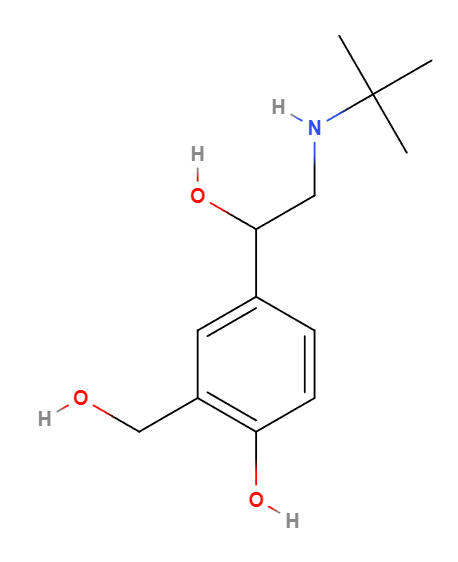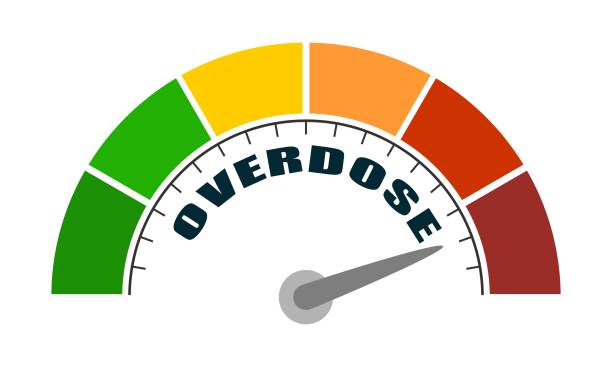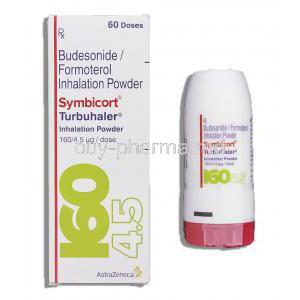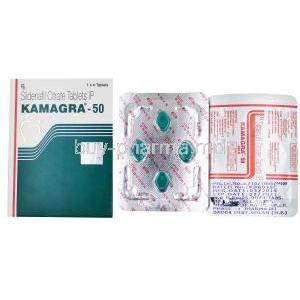Ventorlin, Salbutamol Inhaler
- What is Salbutamol Inhaler
- Composition and Properties
- Uses of Salbutamol Inhalers
- Off-Label Uses of Salbutamol
- How Salbutamol Works
- Dosage and Administration
- Administration to Specific Populations
- Common Side Effects
- Serious Side Effects and Reactions
- Interactions with Other Medications
- Warnings and Contraindications
- Important Precautions
- Handling and Storage Precautions
- Overdose Management
- Careful Administration Guidelines
What is Salbutamol Inhaler
The Salbutamol inhaler treats respiratory conditions like asthma and COPD. It acts as a bronchodilator, easing breathing by relaxing airway muscles and improving airflow to the lungs. Developed in the 1960s, Salbutamol was designed to alleviate bronchospasm in asthma and similar ailments. Over time, the delivery methods for Salbutamol have advanced, with inhalers emerging as the choice for their effectiveness in directly administering medication to the lungs and providing quick relief from respiratory issues.

Composition and Properties
Active Components and Composition Details
Salbutamol sulfate is the active ingredient in Salbutamol inhalers. This formulation is carefully calibrated to ensure that each spray of the inhaler administers the medication, which is crucial for effectively managing symptoms.

How Salbutamol Works in the Respiratory System
Salbutamol attaches to adrenergic receptors in the smooth muscles of the airways, causing muscle relaxation and widening of the air passages. This process swiftly relieves symptoms of bronchospasm, such as wheezing and difficulty breathing.
Contrasting Salbutamol with Bronchodilators reveals both similarities and distinct features:
- Salbutamol Inhaler vs. Albuterol: Although commonly used interchangeably in language, Albuterol serves as the USAN (United States Adopted Name) for Salbutamol utilized in the United States, indicating no chemical disparity between them.
- Salbutamol vs. Clenbuterol: While both belong to the beta 2 agonist category, Clenbuterol is predominantly employed for its lasting effects on non-respiratory conditions, setting it apart significantly from Salbutamol's specific respiratory application.
- Salbutamol vs Ratiopharm: Ratiopharm is a brand that offers pharmaceutical products, including Salbutamol. Distinctions lie in brand formulations and additional ingredients that may impact user experience.
- Salbutamol vs. Ventolin: Ventolin, a brand of Salbutamol inhalers, often emphasizes similar therapeutic benefits. Variations in the design of inhaler devices and their additional components may impact a patient's choice and commitment to treatment.
Uses of Salbutamol Inhalers
Salbutamol inhalers are mainly prescribed to help with issues, providing quick relief and management of symptoms:
- Salbutamol inhalers are highly beneficial for managing asthma. They act swiftly to relieve acute bronchospasm episodes and improve breathing function.
- Salbutamol improves airflow and reduces exacerbations' impact in treating chronic obstructive pulmonary disease (COPD).
- Individuals suffering from exercise-induced bronchospasm rely on Salbutamol inhalers to prevent and manage symptoms triggered by physical activity, enabling them to lead active lives without constraints.
- When coughing is a result of underlying bronchospasm, Salbutamol proves effective in offering relief from symptoms.

Off-Label Uses of Salbutamol
Salbutamol inhalers are commonly known for their approved uses. However, they are also being explored for purposes other than the FDA's recommendations. The below exploration highlights the applications of this medication.
- Delving into Unapproved Uses in Medical Practice: Apart from respiratory care, Salbutamol is being studied for its potential benefits in treating other medical conditions. For instance, it has shown promise in cases of hyperkalemia by helping to reduce high potassium levels in the bloodstream.
- Examination of Research and Studies Supporting Unconventional Benefits: Several studies have validated the effectiveness of Salbutamol in various off-label scenarios. Research indicates its potential in managing issues related to potassium imbalances by facilitating the movement of potassium into cells, thereby assisting in stabilizing heart function.
How Salbutamol Works
Salbutamol is a medication targeted for conditions mainly used in breathing treatments with known action pathways.
Understanding How It Works
Acting as an adrenergic agonist, Salbutamol activates specific receptors on the airway muscles, relaxing and widening the bronchial tubes. This response helps alleviate the constriction symptoms linked to asthma and COPD.
Interacting with Lung Receptors
The drug's preference for receptors allows it to focus its effects on the lungs, reducing the risk of side effects that may arise from stimulating beta 1 receptors in the heart. This targeted approach enhances benefits while minimizing broader impacts on the body.
Dosage and Administration
Managing respiratory conditions effectively using Salbutamol relies on following the prescribed dosages and correct administration methods.
Guidelines for dosage differ based on age, with children needing lower doses than adults.
- For children, a lower dose of Salbutamol inhalers is usually prescribed and adjusted based on symptom severity and their response to initial treatment.
- For adults, depending on the clinical situation and specific product formulation, they may require frequent dosing or higher doses per inhalation.
Adhering to the recommended dosages is crucial to prevent under- or overdosing, which can be ineffective or harmful. Proper inhalation involves exhaling, correctly positioning the mouthpiece, and inhaling deeply and steadily while activating the inhaler for optimal drug delivery into the lungs.
Consistency in dosing frequency is essential for controlling symptoms, and using it "as needed" during sudden bronchospasm attacks is advised for quick relief.

Administration to Specific Populations
Salbutamol is effective for a range of patients, but it's important to customize how it's given to meet the specific needs of different groups.
- Recommendations for Patients: Older individuals might be more sensitive to Salbutamol. Starting with doses and closely watching for heart-related side effects can help reduce any potential risks.
- Guidelines for Pregnant Women and Nursing Mothers: The safety of using Salbutamol during pregnancy and breastfeeding hasn't been definitively confirmed. It should only be used if the benefits to the mother outweigh any risks to the baby.
- Adjustments in Dosage and Safety Measures for Children: When giving Salbutamol to children, it's crucial to adjust the dosage to minimize risks while ensuring effectiveness. Monitoring their growth and development and following guidelines are essential for their safety.
Common Side Effects
While Salbutamol is usually well tolerated, it can lead to side effects, especially when not used as instructed.
List and Description of Frequent Adverse Reactions
Common adverse reactions include tremors, headaches, and an elevated heart rate. Rare but severe responses may consist of hypokalemia and hyperactivity.
Managing Side Effects and When to Seek Medical Attention
Most side effects are mild and tend to lessen over time. However, persistent or severe symptoms should prompt medical attention so that the treatment plan can be adjusted accordingly.
Salbutamol and Weight Loss
Although not medically recommended, anecdotal reports and some research suggest that Salbutamol might aid in weight loss due to its metabolic effects. It is crucial not to use it unsupervised as side effects are possible.

Serious Side Effects and Reactions
Although Salbutamol is effective in treating conditions, it can come with severe potential side effects and reactions that require immediate medical attention.
- Identifying Severe Reactions and Emergency Procedures: Severe reactions such as anaphylaxis, severe rash, angioedema, and paradoxical bronchospasm should prompt medical intervention.
- Long-term Risks Linked to Continued Use: Prolonged use of Salbutamol may result in tolerance buildup, leading to the need for doses to achieve the same therapeutic effect. This could also elevate the risk of events, particularly in individuals predisposed to such issues.
Interactions with Other Medications
Salbutamol has the potential to interact with a variety of medications, which could impact its effectiveness or put patients at risk of experiencing effects.
- Different Medications That Can Interact and Their Effects on Effectiveness: Beta-blockers may counteract the benefits of Salbutamol, while diuretics might raise the chances of hypokalemia. Moreover, using sympathomimetic drugs can worsen side effects.
- Tips for Preventing Unwanted Interactions: Patients are advised to share a list of their medications with their healthcare providers, including any over-the-counter drugs and supplements, to effectively manage and adjust their treatment plans and prevent harmful interactions.
Warnings and Contraindications
Salbutamol has specific warnings and restrictions to ensure safe usage, especially in individuals with certain health conditions or physiological states.
- For individuals with existing cardiovascular issues such as arrhythmias or ischemic heart disease, caution is advised when using Salbutamol to prevent the worsening of these conditions.
- It is important to note that individuals with a history of hypersensitivity should not use Salbutamol for any of its components or those who have experienced bronchospasm, a rare but severe reaction, to the medication.

Important Precautions
It's essential for individuals thinking about or currently using Salbutamol to follow safety recommendations, especially if they have existing health issues or certain lifestyle factors.
- Guidelines for Patients with Preexisting Health Conditions: Those with thyroid problems, diabetes, or seizures should work closely with their healthcare provider to adjust Salbutamol dosage as needed and monitor for any effects.
- Lifestyle and Dietary Suggestions: Individuals using Salbutamol should avoid stimulants like caffeine, which might heighten the drug's side effects. Maintaining a diet and regular exercise routine also reduces the chances of adverse effects and promotes respiratory wellness.
Handling and Storage Precautions
Following the recommended guidelines for handling and storing salbutamol is essential to ensure it remains effective and safe.
- Maintaining Efficacy through Storage: To prevent the medicine from degrading, Salbutamol inhalers should be stored at room temperature in a dry place away from sunlight.
- Preventing Contamination with Handling: To prevent contamination, users should handle the inhaler with clean hands and avoid sharing it with others. Regularly cleaning the inhaler's mouthpiece is also necessary to maintain cleanliness and optimal functioning.

Overdose Management
Overdosing on Salbutamol can have consequences and requires prompt medical attention.
- Symptoms of an overdose may manifest as palpitations, chest discomfort, fast heartbeat, shaking, restlessness, and disorientation. It could result in low potassium levels and lactic acid buildup.
- If an overdose occurs, it is crucial to seek medical help. Treatment involves measures focused on alleviating symptoms using specific beta blockers to counteract the effects in a controlled setting.

Careful Administration Guidelines
Effective management of Salbutamol is crucial for achieving the desired treatment outcomes and reducing risks.
- Guidelines for Healthcare Professionals: Healthcare providers need to ensure dosing and regular monitoring of both the patient's response and any potential side effects. Guiding how to use the inhaler correctly during patient consultations is essential.
- Patient Education on Self-Administration: It is paramount to teach patients how to use their inhalers, including how to take inhalations and care for their devices. Patients should also be educated on recognizing signs of inadequate disease control so that they can adjust their treatment plan promptly.
Ventorlin, Salbutamol Inhaler FAQ
- Is Salbutamol a steroid?
- How to use Salbutamol Inhaler
- How to take Salbutamol Inhaler
- How often can you take Salbutamol Inhaler
- How many times a day can you use Salbutamol Inhaler
- How long should a Salbutamol Inhaler last
- How many puffs in Salbutamol Inhaler
- How to tell if a Salbutamol Inhaler is empty
- How many doses in Salbutamol Inhaler
- How does Salbutamol Inhaler work
- What type of inhaler is Salbutamol
- What is a Salbutamol Inhaler
- What is Salbutamol sulfate Inhaler used for
- What happens if you take too much Salbutamol Inhaler
- When to use Salbutamol Inhaler
Is Salbutamol a steroid?
Salbutamol isn't a steroid; it falls under the category of medications known as bronchodilators, a type called short-acting beta-agonists (SABA). Its mechanism involves relaxing the muscles surrounding the lung airways, facilitating breathing by opening these passages. Salbutamol is commonly prescribed to alleviate asthma and chronic obstructive pulmonary disease (COPD) symptoms like wheezing and breathlessness. In contrast, steroids belong to a medication class primarily used to decrease airway inflammation. They are typically taken regularly for symptom control and prevention, while salbutamol is used for relief during acute episodes.
How to use Salbutamol Inhaler
Using a Salbutamol inhaler correctly is essential for the medication to work effectively. Here are detailed steps on how to use a Salbutamol inhaler:
Before Using
- Inspect the Inhaler: Ensure the Inhaler is clean and free of dirt or debris. If it's new or hasn't been used recently, shake it well. Release a few test sprays into the air to prime it.
Steps to Follow
- Shake the Inhaler: Before each use, shake the Inhaler vigorously for at least 5 seconds to ensure proper medication mixing.
- Exhale: Take a deep breath to empty your lungs, preparing for a full inhalation.
- Hold the Inhaler Correctly: Hold the Inhaler with your thumb at the base below the mouthpiece and your index finger on top. Seal your lips firmly around the mouthpiece.
- Inhale Slowly: Start inhaling through your mouth as you press down on the top of the Inhaler to release one puff (dose) of Salbutamol. Continue breathing in deeply.
- Retain Your Breath: After inhaling, hold your breath for 10 seconds or as long as comfortable to allow the medication to settle in your lungs effectively.
- Exhale Gently: Breathe slowly and gently after taking the medication.
If You Need More Than One Puff
- If your doctor prescribes more than one puff per dose, wait 30 seconds, give the Inhaler a little shake, and then repeat the steps for each puff.
After Use
- Remember to rinse your mouth with water after using the Inhaler to avoid irritation and lower the chances of getting thrush, a mouth yeast infection.
- Additionally, clean the Inhaler by wiping the mouthpiece with a cloth or tissue regularly – do not wash the metal canister or submerge any part in water.
How to take Salbutamol Inhaler
Using a Salbutamol inhaler correctly is essential for the medication to work effectively. Here are detailed steps on how to use a Salbutamol inhaler:
Before Using
- Inspect the Inhaler: Ensure the Inhaler is clean and free of dirt or debris. If it's new or hasn't been used recently, shake it well. Release a few test sprays into the air to prime it.
Steps to Follow
- Shake the Inhaler: Before each use, shake the Inhaler vigorously for at least 5 seconds to ensure proper medication mixing.
- Exhale: Take a deep breath to empty your lungs, preparing for a full inhalation.
- Hold the Inhaler Correctly: Hold the Inhaler with your thumb at the base below the mouthpiece and your index finger on top. Seal your lips firmly around the mouthpiece.
- Inhale Slowly: Start inhaling through your mouth as you press down on the top of the Inhaler to release one puff (dose) of Salbutamol. Continue breathing in deeply.
- Retain Your Breath: After inhaling, hold your breath for 10 seconds or as long as comfortable to allow the medication to settle in your lungs effectively.
- Exhale Gently: Breathe slowly and gently after taking the medication.
If You Need More Than One Puff
- If your doctor prescribes more than one puff per dose, wait 30 seconds, give the Inhaler a little shake, and then repeat the steps for each puff.
After Use
- Remember to rinse your mouth with water after using the Inhaler to avoid irritation and lower the chances of getting thrush, a mouth yeast infection.
- Additionally, clean the Inhaler by wiping the mouthpiece with a cloth or tissue regularly – do not wash the metal canister or submerge any part in water.
How often can you take Salbutamol Inhaler
The frequency of using a Salbutamol inhaler may vary depending on an individual's health needs and the guidance of a healthcare professional. Here are some general guidelines on how Salbutamol can be used:
For Acute Symptoms
- As Needed: Salbutamol is typically recommended for use as required to alleviate asthma or COPD symptoms like wheezing, shortness of breath, and chest tightness.
- Dosage: Usually, 1 or 2 puffs are taken to alleviate symptoms.
- Interval: Salbutamol's effects last 4 to 6 hours, so it can be used every 4 to 6 hours, as necessary.
For Exercise Induced Bronchospasm (EIB)
- Preventative Use: Salbutamol can be taken 15 to 30 minutes before exercise to prevent-induced bronchospasm.
- Dosage: Typically, two puffs are taken before exercising.
- Scheduled Use: Some healthcare providers may prescribe Salbutamol on a scheduled basis to prevent or reduce recurrent symptoms.
Frequency
The specific schedule and dosage will be determined based on the individual's condition and the doctor's advice.
How many times a day can you use Salbutamol Inhaler
The frequency at which you should use a Salbutamol inhaler may differ based on your health requirements and the guidance given by your healthcare provider. Here are some general suggestions:
For Immediate Relief
- Common Practice: Salbutamol is often used to alleviate asthma or COPD symptoms.
- Dosage: Typically, 1 or 2 puffs are taken per use.
- Usage Frequency: It can be used every 4 to 6 hours when necessary, depending on the severity of your symptoms and their management.
Maximum Recommended Usage
- Daily Restriction: It's generally advised not to exceed 12 puffs within 24 hours. However, specific situations, like asthma episodes, may call for different dosages, which should be overseen by medical professionals.
For Preventing Exercise-Induced Bronchospasm
- Preventive Measures: If using Salbutamol to prevent exercise-induced bronchospasm, taking 2 puffs 15 to 30 minutes before activity is usually recommended.
How long should a Salbutamol Inhaler last
A Salbutamol inhaler's duration varies depending on factors like the dosage and how often it is used. Let's break it down to understand how long your inhaler should typically endure:
Number of Doses in Each Inhaler
- Most Salbutamol inhalers contain around 200 metered doses.
Calculating Usage Duration
- For instance, if you're instructed to take 2 puffs each time and use the inhaler 4 times daily, you'd be using 8 puffs daily. In this scenario, a 200-dose inhaler would typically last for 25 days.
Some important points to consider
- Frequency of Use: If the inhaler is used only as needed for symptoms, it will last longer than consistent scheduled usage.
- Monitoring: It's crucial to keep track of the doses used since inhalers may not always run out of fuel when the medication finishes, potentially giving a false sense that there's still medication remaining when you activate it.
How many puffs in Salbutamol Inhaler
Many Salbutamol inhalers contain around 200 doses or puffs in each canister, a common feature across various brands of Salbutamol (known as albuterol in the U.S.). Each puff administers a medication dosage usually intended to offer effective symptom relief for asthma and conditions like COPD when used correctly. It's advisable to refer to the product details of your inhaler for any variations based on the manufacturer or specific product type.
How to tell if a Salbutamol Inhaler is empty
Ensuring your Salbutamol inhaler is not empty is essential to guarantee you always have your medication available when required. Here are some ways to determine if your inhaler is running out:
1. Check the Dose Counter
- Many modern inhalers include a counter that shows the remaining number of doses. This is a way to monitor how much medication remains. Once the counter reaches zero, the inhaler is empty.
2. Weighing the Inhaler
- Using a scale to weigh the inhaler can help indicate if it's empty, especially if there's no dose counter. Compare its weight with its original weight (this information can be found on the product packaging or online). While not extremely precise, this method can provide an estimation.
3. Floating Test
- Some individuals employ the "floating" test by shaking the inhaler and placing it in water to observe if it floats at an angle or level. However, manufacturers do not recommend this method as it may harm the inhaler and is considered unreliable.
4. Monitor Usage
- Keeping a record of the number of doses used can also help determine when you might be running low on medication, notably if your inhaler lacks a dose counter. By tracking how often you use your inhaler and knowing the average number of doses (typically around 200), you can better gauge when it's time to get a new one.
How many doses in Salbutamol Inhaler
Most Salbutamol inhalers typically come with around 200 doses or puffs per canister, which is a common standard for various Salbutamol (or albuterol in the U.S.) inhaler brands. Each puff administers an amount of the medicine used to manage conditions such as asthma and COPD. It's essential to check your inhaler's label or accompanying information leaflet to verify the exact number of doses it contains, as this may vary depending on the manufacturer or specific product line.
How does Salbutamol Inhaler work
Salbutamol inhalers function by administering medicine to the lungs to quickly alleviate symptoms associated with ailments such as asthma and chronic obstructive pulmonary disease (COPD).
What type of inhaler is Salbutamol
Salbutamol, a used medication, is often given through a metered dose inhaler (MDI), one type of inhaler. Depending on the patient's needs and preferences, Salbutamol can also be administered using types of inhalers like dry powder inhalers (DPI) and nebulizers. Many people prefer the MDI due to its portability and ease of use. This bronchodilator, Salbutamol, is primarily used to alleviate symptoms of asthma and COPD by relaxing the muscles in the airways and improving airflow to the lungs.
What is a Salbutamol Inhaler
A Salbutamol inhaler is a tool for administering Salbutamol medication, a bronchodilator that aids in opening the air passages in the lungs. It is commonly utilized to alleviate symptoms of bronchospasm, such as wheezing, difficulty breathing, and chest tightness, linked to illnesses such as asthma and chronic obstructive pulmonary disease (COPD).
What is Salbutamol sulfate Inhaler used for
Salbutamol sulfate inhalers are mainly utilized to control and alleviate symptoms linked to asthma and other respiratory conditions, such as chronic obstructive pulmonary disease (COPD). They are also used to manage symptoms, prevent exercise-induced bronchospasm, and handle chronic symptoms.
What happens if you take too much Salbutamol Inhaler
Overusing Salbutamol from an inhaler can result in side effects ranging from mild to severe. It's crucial to follow the dosage of the inhaler to prevent these complications. Possible consequences of an overdose include a heartbeat (Tachycardia), jitteriness or shaking, feelings of nervousness or anxiety, headaches, lightheadedness, muscle cramps, low potassium levels (Hypokalemia), high blood sugar levels (Hyperglycemia), and chest discomfort.
When to use Salbutamol Inhaler
In situations such as these, a Salbutamol inhaler is utilized to address breathing issues linked to ailments such as asthma and COPD. The key instances where using a Salbutamol inhaler is recommended include dealing with acute asthma symptoms or attacks, preventing exercise-induced bronchospasm, maintaining symptoms through scheduled dosing, and managing a COPD flare-up.



























